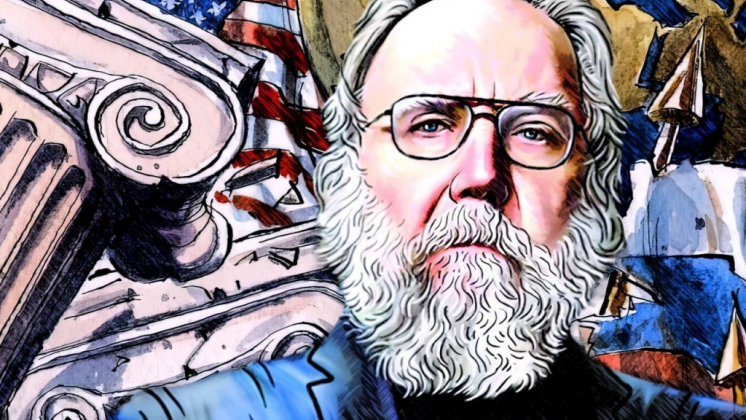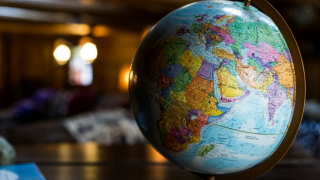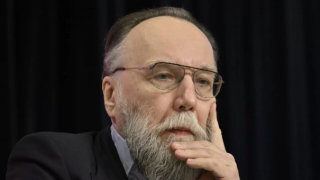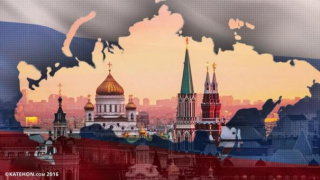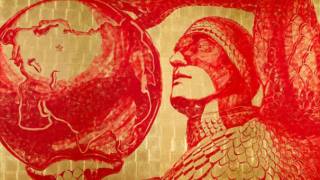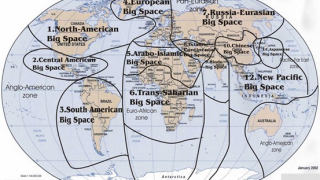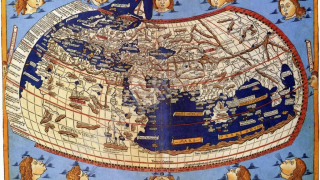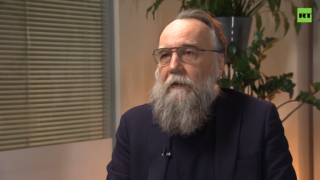Second World, Semiperiphery and State-Civilization in Multipolar World Theory
Part 1
The phase transition from unipolarism to multipolarism and the three concepts
To understand the fundamental transformation of the world order before us, and especially the transition from a unipolar (globalist) to a multipolar model, different conceptual units and methods can be used. They should gradually develop into a more or less coherent theory of a multipolar world. I proposed the first version of this theory in my books The Theory of a Multipolar World [1] and Geopolitics of the Multipolar World [2], but these are only the first approaches to such a serious topic.
In this article, I wanted to draw attention to three concepts that can best help to understand the basic content of the global transition taking place in the system of International Relations. It is what explains the main trends, conflicts and problems of our time, from the conflict in Ukraine to the Taiwan problem and many more local ones. If we understand the structure of the phase transition, we will understand the meaning of current events, but this transition also requires a conceptual description. This is what the three concepts discussed in this article are for.
The First, Second and Third Worlds
First of all, we should pay attention to the now somewhat forgotten 'three worlds' theory, popular in the era of the 'cold war'. This is the basis of the notion of the 'third world' that has become a popular and persistent concept in theories of international relations and, more generally, in political language [3]. However, the term 'first world' has received no such elaboration, while the concept of the second world has hardly or never been used. However, it is the concept of the second world and its main features that best fit the multipolar order and best describe the main actors of multipolarity.
The three-world zoning theory - first, second and third - is based on an assessment of the level of technological progress, economic efficiency and growth rates, industrialisation and post-industrialisation, and a country's position in the global distribution of labour.
The first world was considered, during the Cold War era, to be the West, the United States and its main allies, including Japan. The West was not considered geographically, but civilly. The First World category included countries with a developed capitalist economy, liberal-democratic regimes, a high prevalence of urban and industrial centres (high level of urbanisation), but above all, high rates of economic growth, scientific and technical potential, financial leadership, possession of state-of-the-art weapons, dominance in the strategic sphere, advanced medicine, etc. The first world was seen as the ultimate model of human society, the vanguard of progress and the visible expression of the destiny of all humanity. The other two worlds were seen as destined to catch up with the first world, moving ever closer to it.
Since it was the first world that was taken as the universal model, the other 'two worlds' were described in comparison to it.
The third world was the exact opposite of the first world. It was an area lagging far behind the West, with a stagnant and slowly developing (or not developed at all) economy, minimal scientific and technological development, an unstable currency, an early stage of democracy combined with archaic political institutions, a weak and incompetent army, low industrialisation, pervasive corruption, underdeveloped medicine, widespread illiteracy and a predominantly rural population [4]. The Third World was totally dependent on the First World and sometimes on the Second World, and the sovereignty of Third World countries was a mere convention with no real content [5]. The first world felt obliged to take responsibility for the third world, hence the theory of 'dependent development' [6], the gigantic non-repayable loans, and the establishment of a direct curatorship over the political, economic and intellectual elites of these countries, some of whom were incorporated into the educational systems of the first world.
The Second World, however, in the Cold War era was endowed with certain peculiar characteristics. It referred to socialist regimes that, while rejecting the political economy of capitalism, i.e. in direct ideological opposition to the 'first world', had nevertheless achieved a level of development comparable to that of the 'first world' countries. However, in terms of aggregate indicators (whose criteria were formulated by the first world, which allows for a certain ideological bias and motivation), the second world was still lagging behind the first world. However, the lag was not as significant as in the case of the third world.
The second world mainly meant the USSR, but also the Eastern Bloc countries (especially in Eastern Europe).
The concept of the second world is important as a precedent for the first world to recognise that, even following an alternative development scenario to liberal capitalism, it is possible to achieve results that are cumulatively comparable to those of the West. This is what distinguishes the second world from the third world. The second world had the potential to effectively oppose the first and challenge the universality of its model, and this effectiveness had very concrete expression in terms of economic growth rates, number of nuclear warheads, level of scientific potential, education, social protection, urbanisation, industrialisation, etc.
The first world corresponded to the western capitalist camp, the second world to the eastern bloc and socialist countries.
The two worlds were in unstable equilibrium. It was unstable because the first world insisted on its supremacy and the second world only had to oppose it, partially adopting from the first world certain elements of economy, technology, etc.
The first and second worlds projected their influence onto the third world, which was the main battleground.
All third-world countries were divided into capitalist and socialist, although there was also a 'Non-Aligned Movement' whose members tried to justify their own development strategy - without the dogmas of capitalism and socialism, but this did not develop into an independent theory and became a system of compromises and combinations depending on the specific situation. However, the criteria of the first world (capitalism) or their doctrinal reinterpretation in the ideology of the second world (socialism) have served as a model.
The backbone of international politics in the Cold War era was thus the confrontation between the first world and the second world. This is reflected in the bipolar model.
It is important to note, as John Hobbson [7] does, that this division of society types corresponds to the classic triad of 19th century racist anthropology (Morgan [8], Tylor [9], etc.), which distinguished 'civilisation', 'barbarism' and 'savagery'. At the same time, 'white' corresponded to 'civilisation', yellow to 'barbarism' and black to 'savagery'. This model was only definitively abandoned in Western anthropology after the Second World War, but was retained to assess the political and economic development of countries and societies.
Thus, the first world was identified with 'civilisations' (first, with the 'white man' and his 'burden' in Kipling), the second world with 'barbarism' (hence the racist proverb 'scratch a Russian and you'll find a Tatar'), the third world with barbarism - with the 'peoples of Africa and Oceania' (generally with 'blacks').
The Second World: an expanded definition
One thing to note is that at the time of the Cold War things were usually ignored. Even the Russian Empire in the 18th and early 20th century was a second world compared to the West. While industrialisation was in full swing in Western Europe, the Russian Empire was still a predominantly agricultural country. In Western Europe, capitalism and bourgeois democracy took hold, while the Russian Empire retained its monarchy. Autonomous scientific centres operated in Western Europe, while the Russian Empire assiduously copied European science and education. However, the Russian Empire was able to confront the West, defend its sovereignty and way of life, and win wars.
This observation significantly changes the content of the concept of the second world. If it is applicable both to the USSR and the countries under its influence and to the Russian Empire, which occupied roughly the same territory, then it must be understood as something more generalised than the USSR.
The Second World, broadly understood, is a political-economic and ideological model that is an alternative to global capitalism and challenges the dominance and hegemony of the West (First World).
In this sense, the fall of the USSR, although a catastrophe for the Second World (like the fall of the Russian Empire before it), was not the end of it. Already after 1991, the new contours of the Second World began to take shape. Some countries that had been considered 'Third World' during the Cold War - China, India, Brazil, South Africa - took a clear step forward and reached a level of development comparable to that of the First World within three decades. Of course, they have mostly used the tools of global capitalism to do so, but they have been able to adapt them in a way that preserves their sovereignty and makes good use of capitalism (rather than the other way around, as was the case with liberal reforms in Eastern Europe and Russia in the 1990s).
Since the early 2000s, with Vladimir Putin's rise to power, Russia, heir to the second world of the previous phase, gradually began to restore its geopolitical sovereignty, but this time a multipolar rather than bipolar model began to take shape. In this case, the first world was opposed not by a single power, but by several, and the ideology of this confrontation (which took place in each centre of the second world with varying degrees of radicality and ideological clarity) was not socialism (with the exception of China), but an undefined anti-globalism and a purely realistic rejection of Western (especially North American) hegemony.
The Second World countries did not form an ideological bloc. They became an objective belt of power, claiming their own path, qualitatively different from the globalism of the first world.
Political scientists and economists noted this phenomenon as a fait accompli, uniting the Second World countries of the post-bipolar era in the conventional construction of BRIC (Brazil, Russia, India, China), then, after the inclusion of South Africa - BRICS (Brazil, Russia, India, China, South Africa).
At some point, the BRICS governments understood the objective reasoning behind this zoning of civilisation and began to develop their relations within this paradigm. Thus began the cautious and gradual formation of a new second world model. This time multipolar, in that each member of the BRICS is a sovereign phenomenon, independent of the other members of the club.
In the BRICS system, Russia is the undisputed military leader and partly also the resource leader.
China is the undisputed economic leader.
India is the third largest pole, with a strong economic and industrial infrastructure, impressive demography and a highly politically consolidated society.
Brazil symbolically represents the whole of Latin America and its enormous potential (not yet fully revealed), as well as a strong power with a strong military, commercial and scientific component.
South Africa, one of the most developed countries on the African continent, also symbolically represents the new post-colonial Africa, with its enormous potential.
[1] Dugin A. The Theory of a Multipolar World. Budapest: Arktos Media Ltd, 2021.
[2] Dugin A. Geopolítica del mundo multipolar Santiago de Chile: . Ignacio Carrera Pinto Ediciones, 2022.
[3] Aijaz Ch. K. The political economy of development and underdevelopment. New York: Random House, 1973.
[4] Rangel C. Third World Ideology and Western Reality. New Brunswick: Transaction Books, 1986.
[5] Krasner S.D. Sovereignty: Organized Hypocrisy. Princeton: Princeton University Press, 1999.
[6] Cardoso F., Falleto E. Dependency and Development in Latin America. Berkeley: University of California Press. 1979; Ghosh, B.N. Dependency Theory Revisited. Farnham, UK: Ashgate Press. 2001.
[7] Hobson J. The Eurocentric Conception of World Politics: Western International Theory, 1760–2010. Cambridge: Cambridge University Press, 2012.
[8] Morgan Lewis Henry. Ancient Society. Tucson: The University of. Arizona Press, 1995.
[9] Tylor Edward Burnett. Researches into the Early History of Mankind and the Development of Civilization. London J. Murray, 1865.
Translation by Lorenzo Maria Pacini

